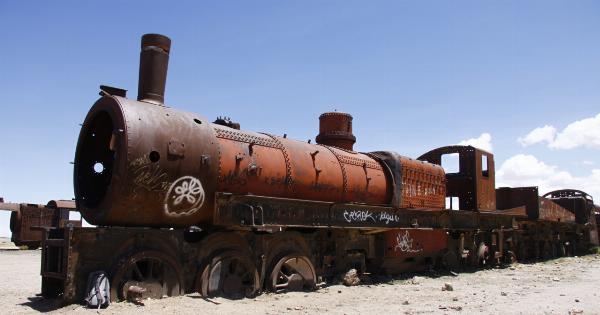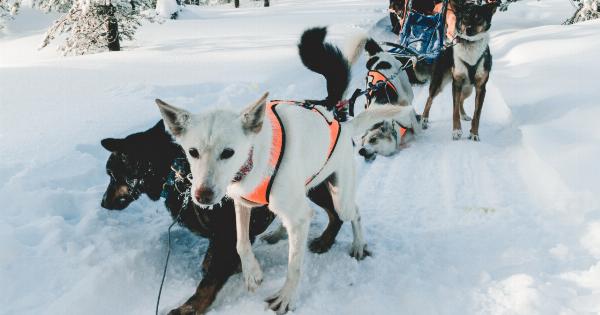Winter storms can be fascinating and beautiful to watch, but they can also cause serious problems to transportation, businesses, and people. Understanding when and where snowstorms hit can help with preparedness, safety, and damage prevention.
Let’s take a closer look at the science behind snowstorms and how they form.
How Do Snowstorms Form?
Snowstorms are large weather systems that result from a combination of various atmospheric conditions. They typically form when cold air meets warm air and the warm, moist air is forced to rise rapidly.
If the rising air is cold enough, the moisture in the air will condense into water droplets and ice crystals, forming snowflakes. The snowflakes then fall to the ground as snow.
The Different Types of Snowstorms
Snowstorms can appear in different forms that vary in intensity and duration. Here are some of the most common types of snowstorms:.
Nor’easters
Nor’easters are a type of snowstorm that typically impact the Northeastern United States during the winter season.
These storms form when a low-pressure system from the Gulf of Mexico clashes with cold air from the north, resulting in heavy precipitation, strong winds, and coastal flooding. Nor’easters can bring many inches of snow in a short time period and can sometimes last for days.
Alberta Clippers
Alberta Clippers are fast-moving snowstorms that originate in western Canada and move quickly eastward, affecting areas across the Great Plains and Midwest regions.
These storms are typically associated with Arctic air masses and can bring low temperatures and light to moderate snowfall.
Lake Effect Snowstorms
Lake effect snowstorms are a type of snowstorm that usually affects areas surrounding the Great Lakes during the winter season.
They occur when cold air passes over the relatively warm waters of the lakes, picking up moisture and causing heavy snowfall in downwind areas. These storms can bring significant amounts of snow and can last for several days.
When Do Snowstorms Occur?
The timing of snowstorms can vary depending on the location and climate. In areas with colder climates, snowstorms can occur from late fall to early spring, while in milder regions, they can appear sporadically at any time throughout the winter season.
However, snowstorms are most likely to occur during certain weather conditions, such as:.
Cold Fronts
Cold fronts are lines of air that separate warm and cold air masses. When a cold front approaches, it may force warm air to rise, leading to snowfall.
The harsher the temperature difference between the cold and warm air mass, the more severe the snowstorm may be.
Low-Pressure Systems
Low-pressure systems can bring some of the heaviest snowstorms as they’re typically associated with large amounts of moisture and high winds.
Low-pressure systems may form anywhere and at any time of the year, but mostly occur during the winter months.
El Niño
El Niño is a natural weather phenomenon that occurs every two to seven years in the Pacific Ocean. During El Niño, warm water flows from the western to eastern Pacific, disrupting the global climate and affecting weather patterns.
In the United States, this can cause warmer temperatures and less snow in the winter season along the West Coast and colder temperatures with more snow in the Northeast and Great Plains regions.
Snowstorm Preparation
When a snowstorm is predicted, it’s critical to be adequately prepared to minimize damage, injury, and disruption to daily life. Here are some tips to ensure your safety during a snowstorm:.
Monitor the Weather Forecast
Stay updated with weather reports from trusted sources to understand when, where, and how the snowstorm will impact your area. Information about snowfall amounts, winds, and temperatures can help you prepare accordingly.
Stock Up on Essentials
Make sure you have enough food, water, medication, and other essential supplies that can last for several days. It’s also advisable to have flashlights, batteries, and a battery-powered radio in case of power outages.
Clear Snow from Your Property
Remove snow and ice from your sidewalks, driveways, and porches to ensure safe walking and driving conditions. If you’re unable to do this yourself, hire a snow removal service.
Stay Safe While Driving
If you must drive during a snowstorm, slow down and maintain a safe distance from other vehicles. Turn on your car’s headlights and use four-wheel drive if necessary. It’s also critical to have winter tires or chains for better traction.
Stay Indoors During the Storm
Avoid travel during snowstorms if possible, and stay inside until the snowstorm passes. If you have to go outside, make sure you dress appropriately in warm clothing, boots, and a hat. Be careful of falling and slipping on icy surfaces.
Conclusion
Understanding the science of snowstorms and when they’re most likely to occur can help prepare and prevent damage and injury. Always follow safety measures during snowstorms and trust credible sources for weather information.
With a little bit of knowledge and preparation, you can make sure that you and your family are equipped to handle any winter weather that comes your way.





























